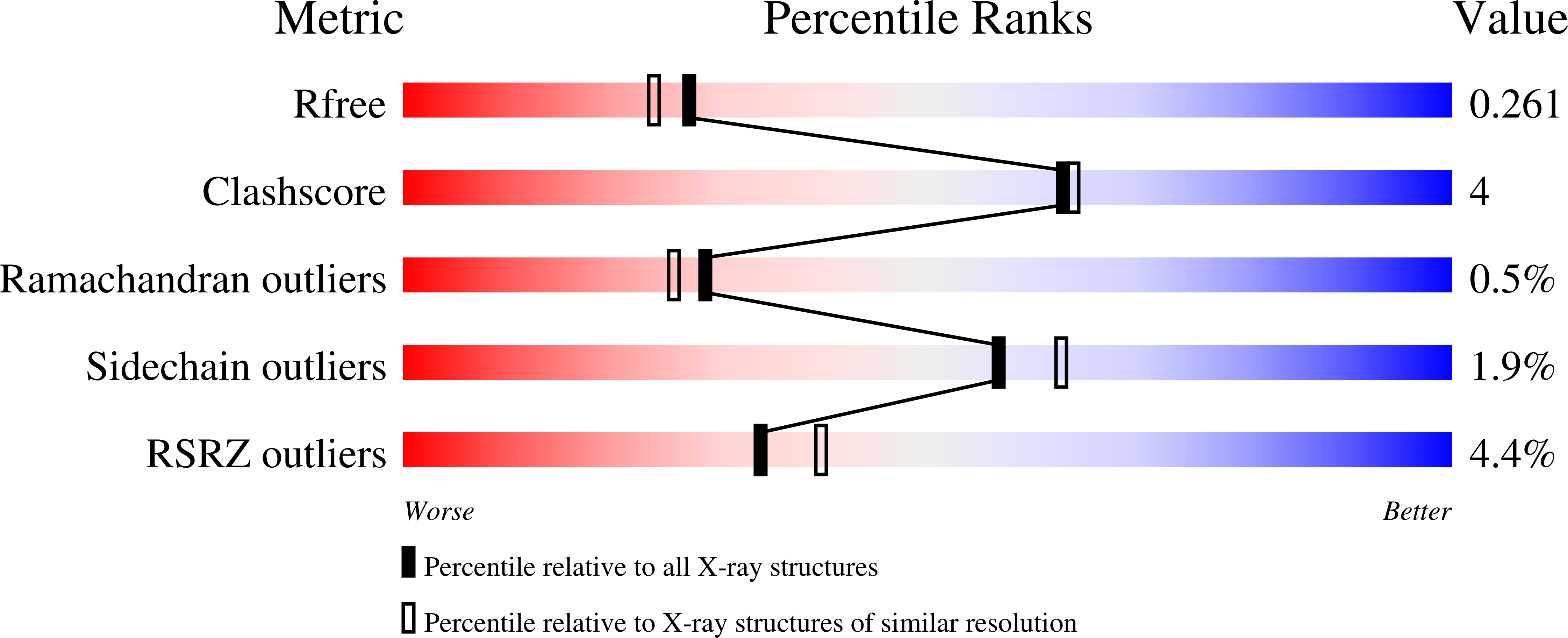Molecular basis for the fold organization and sarcomeric targeting of the muscle atrogin MuRF1.
Franke, B., Gasch, A., Rodriguez, D., Chami, M., Khan, M.M., Rudolf, R., Bibby, J., Hanashima, A., Bogomolovas, J., von Castelmur, E., Rigden, D.J., Uson, I., Labeit, S., Mayans, O.(2014) Open Biol 4: 130172-130172
- PubMed: 24671946
- DOI: https://doi.org/10.1098/rsob.130172
- Primary Citation of Related Structures:
4M3L - PubMed Abstract:
MuRF1 is an E3 ubiquitin ligase central to muscle catabolism. It belongs to the TRIM protein family characterized by a tripartite fold of RING, B-box and coiled-coil (CC) motifs, followed by variable C-terminal domains. The CC motif is hypothesized to be responsible for domain organization in the fold as well as for high-order assembly into functional entities. But data on CC from this family that can clarify the structural significance of this motif are scarce. We have characterized the helical region from MuRF1 and show that, contrary to expectations, its CC domain assembles unproductively, being the B2- and COS-boxes in the fold (respectively flanking the CC) that promote a native quaternary structure. In particular, the C-terminal COS-box seemingly forms an α-hairpin that packs against the CC, influencing its dimerization. This shows that a C-terminal variable domain can be tightly integrated within the conserved TRIM fold to modulate its structure and function. Furthermore, data from transfected muscle show that in MuRF1 the COS-box mediates the in vivo targeting of sarcoskeletal structures and points to the pharmacological relevance of the COS domain for treating MuRF1-mediated muscle atrophy.
Organizational Affiliation:
Institute of Integrative Biology, University of Liverpool, Biosciences Building, Crown Street, Liverpool L69 7ZB, UK.

















